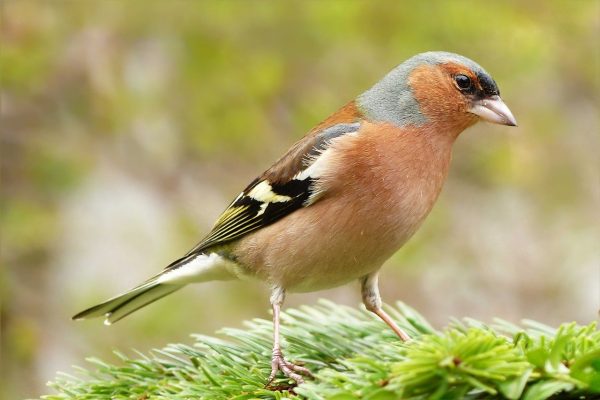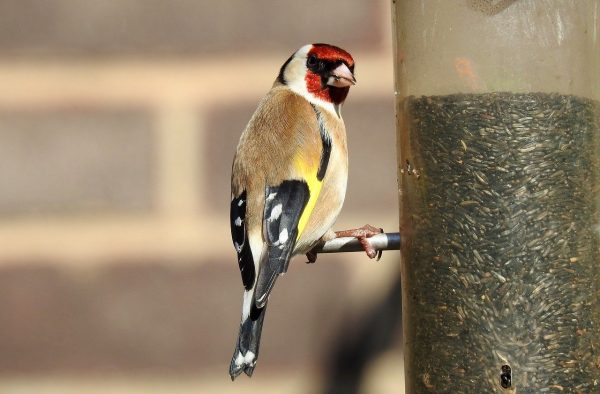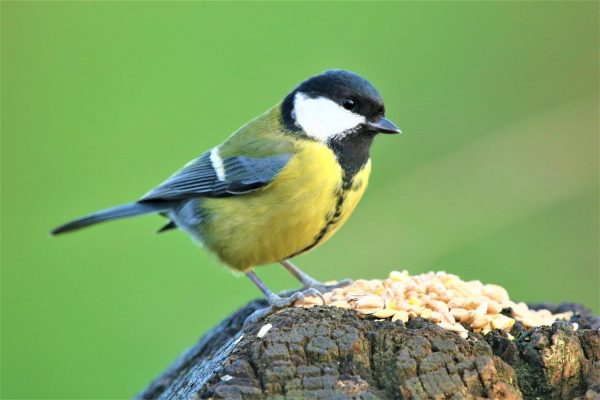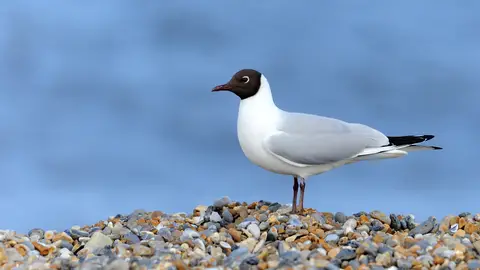As you step into your backyard or take a stroll through the countryside, you’re likely to spot some familiar feathered friends. You might catch a glimpse of a House Sparrow flitting between branches or a Starling’s iridescent feathers catching the sunlight. But how well do you really know these common UK birds? Can you tell a Woodpecker’s drumming from a Treecreeper’s call, or distinguish a Grey Wagtail’s bobbing gait from a Kingfisher’s flash of blue? As you explore the diverse habitats across the UK, you’ll discover a fascinating world of birds waiting to be identified and appreciated.
Key Takeaways
- House Sparrows, European Starlings, and Blackbirds are common garden birds in the UK, often exhibiting flocking behavior for survival and sociality.
- Woodland birds like treecreepers, woodcocks, and wood warblers have adapted to their arboreal environment, exploiting trees’ structural complexities for food and shelter.
- Waterbirds such as Grey Wagtails, Dippers, and Kingfishers thrive in riverine environments, with unique adaptations for foraging and survival.
- Coastal birds like Avocets, Redshanks, and Oystercatchers inhabit saline environments, with specialized characteristics for foraging on mudflats and in estuaries.
- Farmland and urban birds, including Corn Buntings, Skylarks, and Tree Sparrows, have adapted to human-altered environments, exploiting food and shelter opportunities.
Garden Favorites You’ll Recognize
You’re likely familiar with the cheerful chirping of the House Sparrow, whose gray and brown plumage blends seamlessly into urban landscapes.
As you’ve probably noticed, these feathered neighbors are common visitors to your backyard, and their nesting habits are quite fascinating. House Sparrows typically build their nests in tree cavities, rock crevices, or even under eaves, using twigs, grass, and other plant material.
They’re social birds, often living in colonies, and their nests can be quite elaborate, with multiple entrances and exits.
In contrast, the European Starling‘s iridescent plumage shimmers in the sunlight, but its ability to mimic human speech and other sounds often makes it a noisy neighbor.
While they also build nests in cavities, their nesting habits differ from the House Sparrow’s. Starlings are known to take over nests from other birds, and their aggressive behavior can lead to conflicts with other species.
Birds of a Feather Flock

As you observe the social dynamics of garden birds, you’ll notice that certain species tend to flock together, sharing resources and habitats.
This phenomenon, known as flocking behavior, is a fundamental aspect of bird sociality. By congregating in groups, birds can enhance their foraging success, improve predator avoidance, and even facilitate information exchange.
However, within these flocks, social hierarchies often emerge, with dominant individuals occupying prime foraging spots or mating opportunities.
In UK gardens, species like House Sparrows, Starlings, and Blackbirds frequently exhibit flocking behavior.
These birds will often form loose associations, with individuals moving freely between different groups. However, during periods of food scarcity or high predation pressure, these flocks can become more cohesive, with birds adopting specific roles and hierarchies.
Woodland Wonders to Watch
You’ll find Ancient Tree Inhabitants, such as the treecreeper, scaling vertical trunks in search of insects.
Forest Floor Foragers, like the woodcock, probe the undergrowth for earthworms and other invertebrates.
Meanwhile, Canopy Songsters, including the wood warbler, fill the air with melodic trills as they flit between the treetops.
Ancient Tree Inhabitants
While exploring the UK’s woodlands, you stumble upon ancient tree inhabitants that have been thriving for centuries, their presence often going unnoticed by the casual observer.
These ancient dwellers have adapted to their arboreal environment, exploiting the trees’ structural complexities to their advantage. Tree residents like the treecreeper and the nuthatch are expert climbers, using their sharp claws and agile bodies to navigate the rugged bark and twisted branches.
The woodpeckers, with their powerful beaks and shock-absorbing skulls, excavate cavities to create nesting sites, while the goldcrest and firecrest flit between the leafy canopies, gleaning insects and spiders from the intricate network of twigs and foliage.
As you delve deeper into the woodland, you begin to appreciate the intricate relationships between these ancient tree inhabitants and their arboreal habitat. By understanding their unique adaptations and behaviors, you’ll gain a deeper appreciation for the complex ecosystem that exists within these ancient woodlands.
Forest Floor Foragers
Beyond the ancient tree inhabitants, your attention is drawn to the forest floor, where a new cast of characters emerge.
As a keen observer, you’ll notice forest dwellers that thrive in this environment, expertly foraging for food among the leaf litter and undergrowth.
These understory explorers have adapted to life on the forest floor, where the dense canopy above filters the sunlight, casting dappled shadows on the forest floor.
Some of the forest floor foragers you’re likely to spot include:
- Eurasian Treecreepers, with their distinctive, long, curved bills, probing crevices for insects and spiders.
- Woodcock, their cryptic plumage allowing them to blend seamlessly into the undergrowth as they search for earthworms and invertebrates.
- European Robins, their bright eyes scanning the forest floor for scraps and leftovers.
- Common Blackbirds, their strong, pointed beaks rummaging through leaf litter for fruit, insects, and worms.
As you explore the forest floor, keep an eye out for these fascinating birds, each playing a vital role in the woodland ecosystem.
Canopy Songsters
As you raise your gaze from the forest floor, the vibrant melodies of birdsong fill the air, drawing your attention to the canopy above, where a new ensemble of avian performers takes center stage.
In this realm of treetop melodies, the leafy virtuosos of the woodland world showcase their vocal prowess.
The Chiffchaff, with its distinctive, repetitive song, is a common inhabitant of the canopy, often perched on a thin branch, singing its heart out.
The Goldcrest, Britain’s smallest bird, is another regular performer, its high-pitched, twittering song a delight to the ear.
The Wood Warbler, with its melodic, descending phrases, is a summer visitor, while the Treecreeper’s soft, whistled notes provide a gentle accompaniment to the forest’s symphony.
As you scan the canopy, you may catch a glimpse of these birds flitting between branches, their bright plumage flashing in the dappled light.
Take a moment to appreciate the intricate details of their songs, the variations and nuances that set each species apart.
In the world of canopy songsters, every bird is a unique virtuoso, weaving its own thread into the rich tapestry of woodland sound.
Waterbirds You Should Know
You’ll encounter a variety of riverine bird species, such as the Grey Wagtail and Kingfisher, that thrive in freshwater habitats like rivers, streams, and lakes.
In contrast, coastal wetland dwellers like the Avocet and Redshank inhabit the saline environments of estuaries, mudflats, and saltmarshes.
As you explore these different waterbird habitats, you’ll discover the unique adaptations that enable these species to survive and flourish in their respective environments.
Riverine Bird Species
Riverbanks and wetlands along UK rivers support a diverse range of bird species that have adapted to life in these unique environments.
As you explore these areas, you’ll notice that some birds have developed specialized riverbank habits to thrive in these ecosystems.
These water’s edge dwellers have evolved to exploit the resources available in this niche environment.
You can expect to see:
- Kingfishers darting between overhanging branches, their iridescent feathers glinting in the sunlight.
- Dippers bobbing up and down on rocks, searching for aquatic insects.
- Grey Wagtails flitting along the water’s edge, their grey and yellow plumage a striking sight.
- Little Egrets stalking through shallow water, their snowy-white feathers a stark contrast to the river’s muddy banks.
These birds have honed their skills to survive in this dynamic environment, where the water’s edge is a constant battle between erosion and deposition.
Coastal Wetland Dwellers
Tidal flats, saltmarshes, and coastal wetlands along the UK’s shoreline provide a unique habitat for a distinct group of waterbirds, adapted to thrive in these dynamic, saline environments.
As you explore these areas, you’ll encounter a variety of species that have evolved to exploit the rich resources available. Among these, you’ll find the mudflat migrants, such as the Knot, Dunlin, and Ringed Plover, which migrate to the UK’s coastal wetlands each winter.
These birds are well adapted to foraging on the vast expanses of mudflats, probing the sediment for small invertebrates and worms.
As an estuary explorer, you’ll also encounter birds like the Grey Plover, Bar-tailed Godwit, and Oystercatcher. These species are drawn to the mix of fresh and saltwater, where they can feed on a diverse range of prey.
Take note of the Avocet, with its striking black and white plumage, and the Spotted Redshank, which breeds in the UK’s coastal wetlands. By understanding the unique characteristics of these coastal wetland dwellers, you’ll gain a deeper appreciation for the intricate relationships between these birds and their habitats.
Farmland Friends to Identify

Rolling hills and fields of gold, a quintessential British landscape, are home to a diverse array of bird species that thrive in these human-altered environments.
As you explore the countryside, you’ll notice the unique characteristics of farmland birds that have adapted to this habitat.
Some notable species to identify include:
1. Corn Bunting: Recognizable by its streaked brown plumage and distinctive white stripes above the eyes, this bird is often seen perched on fences or telephone wires.
2. Skylark: A common sight in open fields, the Skylark is identified by its brown back and white underside, with a distinctive black stripe above the beak.
Its habitat includes grasslands, arable fields, and meadows.
3. Yellowhammer: This bright yellow bird with a rusty-red head is often seen flitting between hedgerows and field boundaries.
4. Tree Sparrow: With its black spot on the chest and white wing bars, this sparrow species is commonly found in woodlands, hedgerows, and farmland edges.
As you explore the countryside, keep an eye out for these species, and you’ll soon become familiar with the unique characteristics of farmland friends.
Urban Birds That Thrive
As you leave the countryside behind and venture into urban landscapes, you’ll notice a distinct shift in the avifauna.
The open fields and rolling hills give way to concrete jungles, and the birdlife adapts accordingly. Urban adapters, such as the House Sparrow and Starling, thrive in these environments, exploiting the abundance of food and shelter provided by human activity.
You’ll find City dwellers like the Feral Pigeon and Black-headed Gull, which have adapted to the urban sprawl, scavenging for scraps and exploiting the urban food chain.
In urban green spaces, such as parks and gardens, you’ll encounter species like the Woodpigeon and Collared Dove, which have learned to coexist with human populations.
The urban environment also supports a range of bird species that are often overlooked, such as the Goldcrest and Treecreeper, which can be found in urban woodlands and gardens.
Coastal Birds to Look Out
You’re likely to encounter a diverse array of bird species along Britain’s coastline, where the unique combination of saltwater, seaweed, and rocky shores creates a rich habitat for many avian inhabitants.
The coastal landscape is dotted with seabird colonies, where birds like guillemots, gulls, and puffins congregate in large numbers.
As you explore the coastline, keep an eye out for these striking species:
- Oystercatchers, with their brightly colored bills and loud, piping calls, can be seen searching for shellfish in the tidal flats.
- Kittiwakes, small, agile gulls with a distinctive black “M” shape on their wings, are often seen hovering above the waves.
- Cormorants, with their sleek, black bodies and long, sinuous necks, can be spotted diving for fish in the rocky shallows.
- Turnstones, small, sparrow-like birds with mottled brown plumage, are frequent visitors to the coastline, particularly during their migrations.
As a coastal migrant, these birds are an essential part of the ecosystem, and their presence adds to the rich tapestry of Britain’s coastal biodiversity.
Songbirds of the UK Countryside

Venturing into Britain’s countryside, you’ll find a vibrant tapestry of songbirds that inhabit the woodlands, hedgerows, and gardens.
These avian treasures are a delight to observe, with their melodious songs and striking plumage.
The Yellowhammer, with its bright yellow head and breast, is a common sight in open countryside and farmland.
Its habitats typically consist of low-lying shrubs and weeds, where it forages for seeds and insects.
Another notable species is the Meadow pipit, recognized by its brown back and white undersides.
These birds are often seen flitting between tussocks of grass, searching for small invertebrates to snack on.
They’re particularly fond of wet meadows and marshy areas, where their ground-dwelling lifestyle allows them to thrive.
As you explore the countryside, keep an ear out for the sweet melodies of the Song thrush, the chattering of the Magpie, and the gentle cooing of the Woodpigeon.
These songbirds are an integral part of the UK’s rural landscape, and a deeper understanding of their habits and habitats will enrich your appreciation for these feathered wonders.
Frequently Asked Questions: Common Uk Birds
How Do I Attract Birds to My Garden Without a Bird Feeder?
You can attract birds to your garden without a feeder by optimizing your garden layout to include native plants, shrubs, and trees that provide shelter, food, and water, creating a bird-friendly habitat that’ll draw them in naturally.
Can I Keep Birds Away From My Garden Without Harming Them?
Imagine a serene garden oasis, undisturbed by feathered friends. You can achieve this by deploying bird repellents, such as shiny reflective surfaces or predator decoys, and sonic deterrents, like ultrasonic bird repellers, to humanely keep birds at bay.
Why Do Birds Migrate, and Where Do They Go?
You’re curious about bird migration, and rightfully so! Birds migrate to escape harsh weather, find food, and breed, with flight patterns influenced by genetic predisposition, celestial cues, and weather responses, such as changes in daylight and temperature.
How Can I Identify Bird Species by Their Calls and Songs?
As you embark on a sonic safari, grab your trusty iPod (ahem, 2005) and tune in to the avian airwaves: deciphering bird vocalization relies on recognizing song patternization, so focus on repetition, rhythm, and pitch to pinpoint the species.
Are There Any Bird Species That Are Considered Pests in the Uk?
You’ll encounter several bird species in the UK that are deemed pests, requiring pest bird control and bird nuisance management, such as feral pigeons, seagulls, and Canada geese, which can cause significant damage to property and health hazards.
Conclusion
As you’ve explored the world of common UK birds, you’ve only scratched the surface. There are still so many more species to discover, each with their unique characteristics and habitats. Will you be able to spot the elusive Hawfinch in the woodland canopy or stumble upon a flock of Golden Plovers on a windswept coastline? The thrill of the chase is on – get out there and see what other feathered friends you can add to your list!













